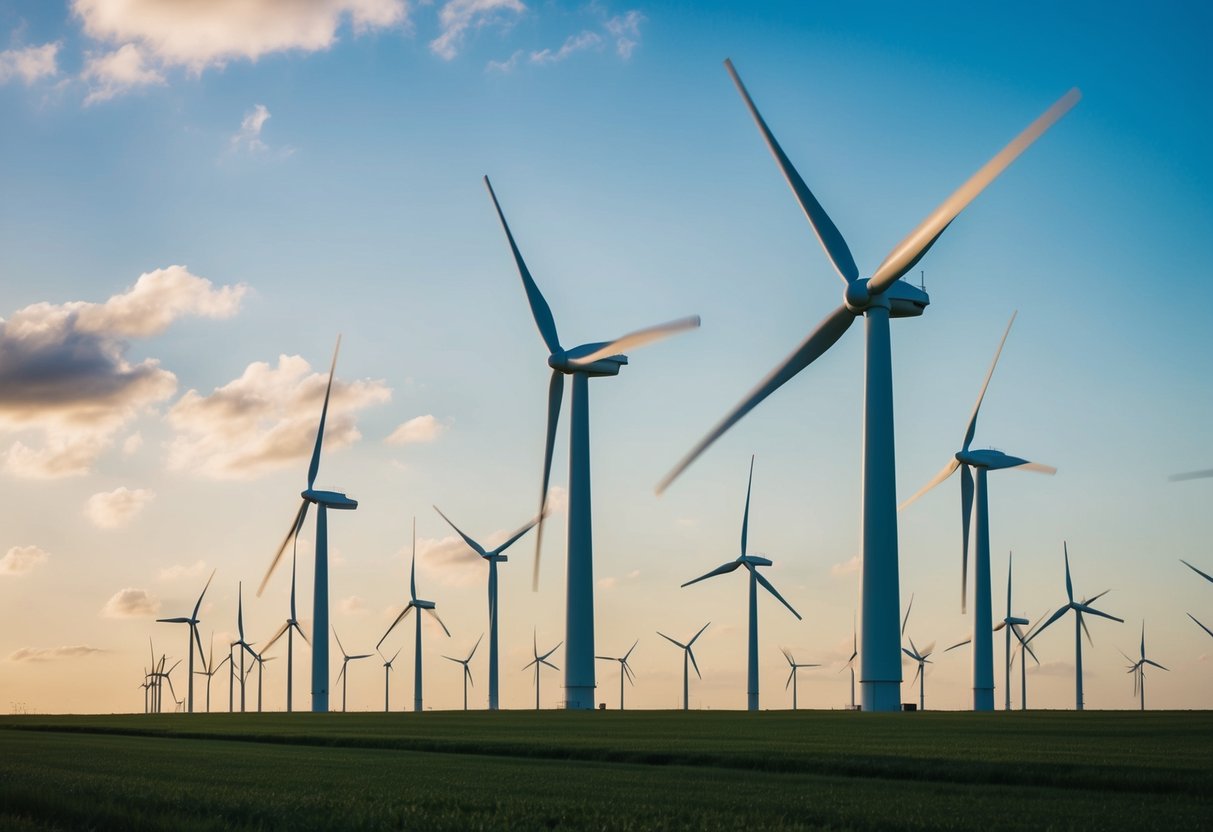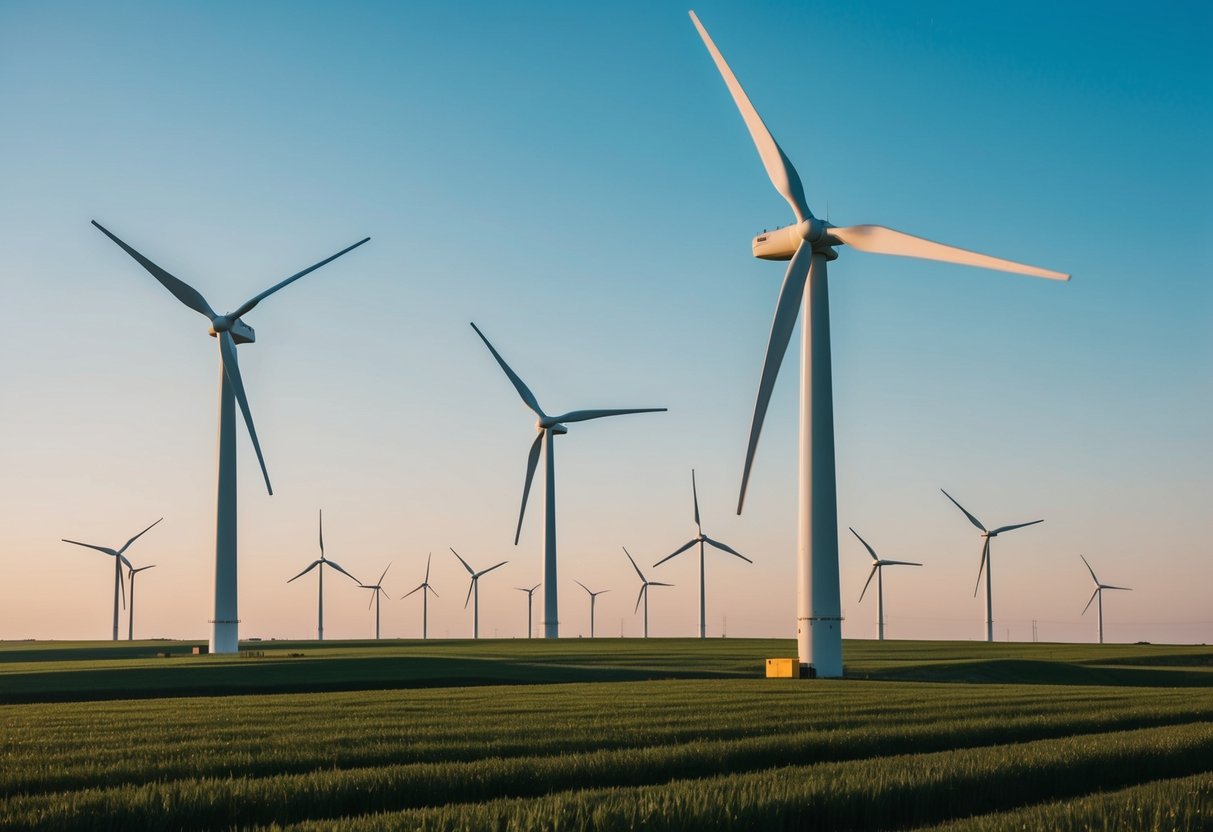Wind Turbines: The Future of Renewable Energy Development
Wind turbines are essential devices that play a crucial role in harnessing wind energy. They convert the kinetic energy of the wind into electrical energy, making them a pivotal part of renewable energy initiatives. Wind turbines significantly contribute to electricity generation, helping to reduce reliance on fossil fuels and combat climate change.

As wind energy continues to gain popularity, understanding how turbines function becomes vital. Different designs and sizes cater to diverse environments, ensuring that communities can effectively harness this clean energy source. With thousands of turbines operating across the globe, they demonstrate the potential of renewable energy in meeting growing electricity demands.
The advantages of wind energy extend beyond environmental benefits. Wind turbines create jobs, stimulate local economies, and provide a sustainable energy solution. As countries strive for a greener future, the importance of wind turbines in the energy landscape cannot be overstated.
Fundamentals of Wind Energy

Wind energy plays a crucial role in the renewable energy landscape. It harnesses the kinetic energy of moving air to generate electricity, making it a sustainable option for power generation. The following sections will explore the key principles of wind energy and its historical context.
Principles of Wind Energy
Wind energy is derived from the movement of air due to uneven heating by the sun. This process creates wind, which carries kinetic energy. Wind turbines capture this energy through large blades that rotate when the wind blows.
The rotation turns a rotor connected to a generator, converting kinetic energy into electricity. The efficiency of this conversion is influenced by factors such as wind speed and turbine design.
Wind power is considered renewable because it relies on a natural resource that replenishes itself continuously. This form of energy significantly reduces carbon emissions compared to fossil fuels, making it an essential component of a cleaner energy future.
History of Wind Power Utilisation
Wind power has a rich history, dating back to ancient civilisations. The earliest windmills appeared in Persia around 500-900 AD. These simple structures transformed wind energy into mechanical energy for grinding grain and pumping water.
The technology evolved through the centuries, with European countries enhancing windmill designs during the Middle Ages. By the 19th century, wind power was used for various applications, from agriculture to shipping.
The modern wind turbine emerged in the late 20th century as technology advanced. Today, turbines are highly efficient and can generate electricity on a large scale, contributing to global energy needs. Wind energy continues to grow, with capacity increasing significantly since the early 2000s, highlighting its potential as a major power source.
Wind Turbine Technology

Wind turbine technology involves several critical components and types that work together to convert wind energy into electrical power. Understanding these elements is essential for grasping how wind energy systems function.
Components of a Wind Turbine
A wind turbine comprises several key components. The blades capture the wind’s kinetic energy, causing the rotor to spin. This rotor connects to a generator located within the nacelle. The nacelle houses the generator and other mechanical systems, ensuring the turbine operates efficiently.
The rotor blades are designed to create lift and drag. Lift moves the blade upward, while drag pulls it back. The interaction of these forces is crucial for generating power. An effective design optimises these forces to maximise energy capture.
Types of Wind Turbines
Wind turbines are generally classified into two main types: horizontal axis turbines and vertical axis turbines. Horizontal axis turbines are the most common and feature blades that rotate around a horizontal axis. These turbines are typically more efficient due to their design.
Vertical axis turbines have blades that spin around a vertical axis. This design allows them to harness wind from any direction without needing to be repositioned. While less common, vertical axis turbines can be beneficial in certain environments, such as urban areas.
Aerodynamics of Turbines
The aerodynamics of wind turbines play a pivotal role in their efficiency. The shape and design of the rotor blades affect how wind interacts with them. Wind flowing over the blades creates differences in air pressure, leading to lift.
For instance, when wind hits the blade, the air pressure on one side decreases. This pressure difference between the upper and lower surfaces generates lift, making the rotor turn. Understanding this aerodynamics helps engineers design more effective turbines that maximise energy production from wind.
Wind Turbine Installation and Locations

Wind turbine installation involves careful planning and site selection to maximise efficiency and energy output. Two main types of installations are onshore and offshore wind farms, each with specific considerations.
Onshore Wind Farms
Onshore wind farms are constructed on land and depend on local terrain and wind patterns. Site selection is critical. Wind speeds, landscape obstacles, and proximity to residential areas can affect energy production.
Installation Costs can vary significantly based on location and project size. Typically, the cost ranges from £1,000 to £3,000 per kW of installed capacity. This includes expenses for the turbines, foundations, and grid connection.
Wind farms must also connect to the electrical grid efficiently to distribute energy. Planning permission is often required and may involve community consultations.
Offshore Wind Developments
Offshore wind developments utilise large turbines on the sea, where wind speeds are generally higher and more consistent. This setting allows for greater energy generation potential compared to onshore options.
These projects can be more expensive due to installation costs that include specialised vessels and equipment. Costs can reach £3,000 to £6,000 per kW, depending on water depth and distance from shore.
Offshore wind turbines are designed to withstand harsh marine conditions. Their installation often requires careful logistics to ensure safe placement. They also need strong connections to the electrical grid to transmit energy back to land.
Operational Aspects of Wind Farms

Wind farms play a crucial role in generating clean energy. Understanding their operational aspects helps in maximising efficiency and ensuring reliable power generation.
Energy Production and Efficiency
Wind farms convert the kinetic energy of wind into electrical energy. The efficiency of this process is influenced by various factors, including wind speed and turbine design.
The capacity factor is a key measure, indicating the ratio of actual energy produced to the maximum possible energy. A higher capacity factor suggests better efficiency.
To optimise energy production, wind turbines are typically placed in areas with high wind potential. Proper positioning ensures they capture more wind, leading to increased power generation. Regular monitoring is necessary to identify performance issues, which can impact overall energy costs.
Maintenance and Servicing
Effective maintenance is vital to ensure long-term performance and reliability of wind farms. Regular inspections help identify any potential issues before they affect energy output.
Scheduled maintenance activities include checking mechanical components, inspecting electronic systems, and monitoring the condition of blades. This proactive approach reduces downtime and maintenance costs.
In 2021, the operations and maintenance (O&M) costs represented a significant share of the total cost of energy produced from wind farms. Thus, investing in robust O&M strategies is essential for maintaining efficiency.
Professional servicing teams often utilise advanced technology to conduct remote diagnostics, improving the speed and accuracy of maintenance activities.
Wind Farm Connectivity
Connectivity to the national grid is crucial for transmitting the generated electricity. Wind farms need a robust electrical system that connects them to substations.
Once energy is generated, it is routed through transformers to match the voltage required by the grid. This ensures smooth integration of wind power into the larger electrical network.
Wind farm operators must comply with regulations regarding grid connectivity to ensure reliability and safety. Improved integration also helps in stabilising energy costs and enhancing the overall effectiveness of renewable energy sources.
In summary, the seamless connection between wind farms and the national grid supports the efficient distribution of clean energy.
Environmental and Social Considerations
Wind turbines play a significant role in energy production and have particular environmental and social impacts that must be evaluated. Core areas of concern include their influence on climate change, effects on wildlife and ecosystems, and economic implications for communities.
Impact on Climate Change
Wind energy is a key component in the fight against climate change. It generates power without emitting greenhouse gases. By replacing fossil fuels, wind turbines help reduce carbon footprints. As wind power capacity expands globally, reliance on coal and gas declines, resulting in lower overall emissions.
Research shows that increasing wind energy use can further accelerate this trend. For example, each megawatt of wind energy can prevent approximately 1,400 tonnes of CO2 emissions annually. This transition is essential for mitigating climate change and achieving global climate goals.
Effect on Wildlife and Ecosystems
The installation of wind turbines can affect local wildlife and ecosystems. Birds and bats are particularly vulnerable, with collisions being a concerning issue. Studies indicate that certain turbine designs and locations can minimise these risks.
Additionally, habitats may be disrupted during the construction phase. Proper planning and environmental assessments can help mitigate these adverse effects. There are guidelines available to ensure that the impact on bird populations and local wildlife is significantly reduced, promoting a balanced approach to renewable energy deployment.
Economic Impacts
Wind power brings economic benefits to communities, such as job creation and energy price stability. As wind farms are built and maintained, they require skilled labour, boosting local employment. Additionally, landowners can earn income by leasing their land for turbine installation.
Investing in wind energy also helps decrease energy costs over time. By diversifying energy sources, communities become less dependent on fluctuating fossil fuel prices. Governments may also see long-term cost savings by investing in wind energy infrastructure.
